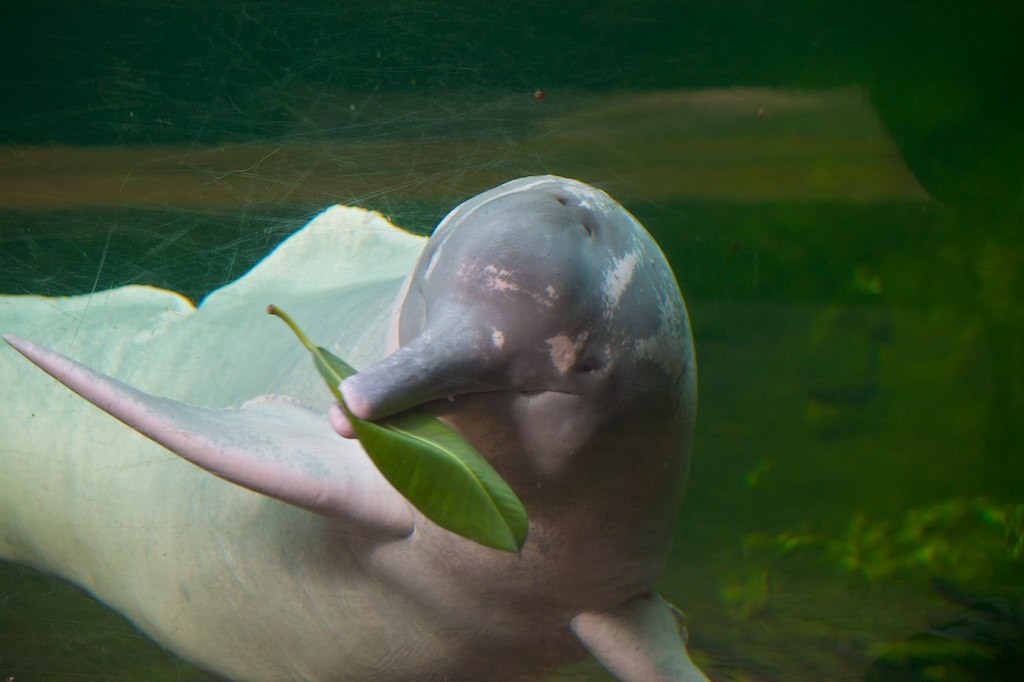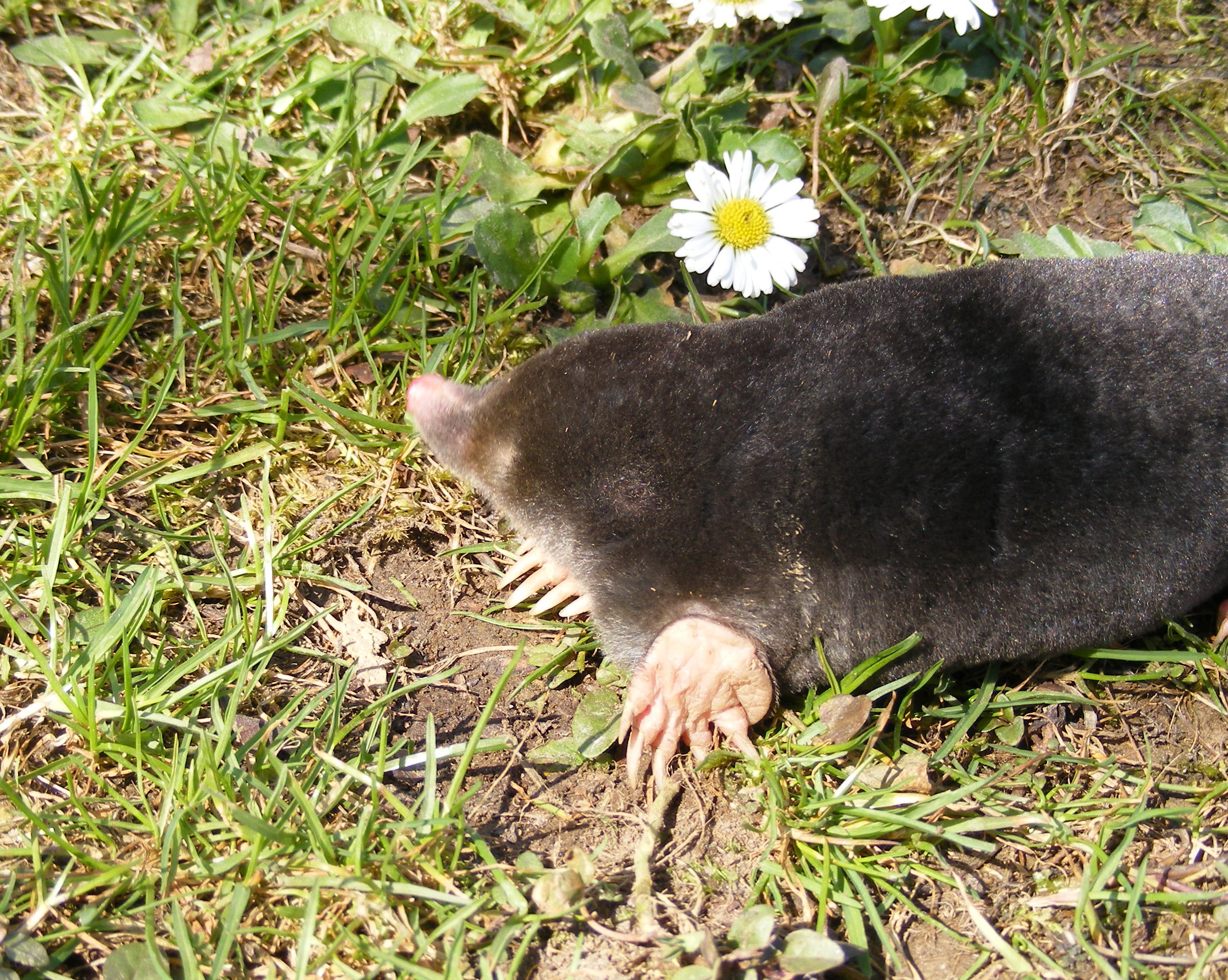|
Desman
The desman, a snouted and naked-tailed diving insectivore of the tribe Desmanini (also considered a subfamily, Desmaninae), belongs to one of two Eurasian species of the mole family, Talpidae. This tribe consists of two monotypic genera of semiaquatic insectivores found in Europe: one in Russia and the other in the northwest of the Iberian peninsula and Pyrenees. Both species are considered to be vulnerable. They have webbed paws and their front paws are not well-adapted for digging. Desmans were much more diverse and widespread during the Miocene, with one genus, ''Gaillardia'', being present in North America. Both living species are thought to have derived from the fossil genus '' Archaeodesmana.'' The list of species is: *Genus ''Desmana'' **Russian desman (''D. moschata'') *Genus ''Galemys'' **Pyrenean desman (''G. pyrenaicus'') * Genus †'' Archaeodesmana'' Miocene-Pliocene, Europe * Genus †''Gaillardia'' Miocene, North America * Genus †'' Mygalinia'' Late Miocene, H ... [...More Info...] [...Related Items...] OR: [Wikipedia] [Google] [Baidu] |
Russian Desman
The Russian desman (''Desmana moschata'') (russian: выхухоль ''vykhukhol'') is a small semiaquatic mammal that inhabits the Volga, Don and Ural River basins in Russia, Ukraine and Kazakhstan. It constructs burrows into the banks of ponds and slow-moving streams, but prefers small, overgrown ponds with abundance of insects, crayfish and amphibians. The Russian desman often lives in small groups of two to five animals, that are usually not related, and appears to have a complex (but largely unstudied) communication and social system. Taxonomy The Russian desman is one of two surviving species of the tribe '' Desmanini'', the other being the Pyrenean desman. Despite its outward similarity to muskrats (a rodent), the Russian desman is actually part of the mole family Talpidae in the order Eulipotyphla. Like other moles, it is functionally blind and obtains much of its sensory input from the touch-sensitive Eimer's organs at the end of its long, bilobed snout. However, the h ... [...More Info...] [...Related Items...] OR: [Wikipedia] [Google] [Baidu] |
Desmana Moschata
The Russian desman (''Desmana moschata'') (russian: выхухоль ''vykhukhol'') is a small semiaquatic mammal that inhabits the Volga, Don and Ural River basins in Russia, Ukraine and Kazakhstan. It constructs burrows into the banks of ponds and slow-moving streams, but prefers small, overgrown ponds with abundance of insects, crayfish and amphibians. The Russian desman often lives in small groups of two to five animals, that are usually not related, and appears to have a complex (but largely unstudied) communication and social system. Taxonomy The Russian desman is one of two surviving species of the tribe '' Desmanini'', the other being the Pyrenean desman. Despite its outward similarity to muskrats (a rodent), the Russian desman is actually part of the mole family Talpidae in the order Eulipotyphla. Like other moles, it is functionally blind and obtains much of its sensory input from the touch-sensitive Eimer's organs at the end of its long, bilobed snout. However, the h ... [...More Info...] [...Related Items...] OR: [Wikipedia] [Google] [Baidu] |
Pyrenean Desman
The Pyrenean desman also called Iberian desman (''Galemys pyrenaicus'') is a small semiaquatic, globally threatened mammal related to moles and shrews, and, along with the Russian desman (''Desmana moschata''), is one of the two extant members of the tribe Desmanini. The species occurs in north and central parts of Spain and Portugal, French Pyrenees, and Andorra, but severe range contractions have been documented across its geographic distribution. Description The Pyrenean desman is long with a rounded scale-covered tail of , and weighs . Pyrenean desmans have a long, sensitive nasal trompe provided with hypertrophic vibrissae and chemo-/mechanosensitive Eimer’s organs helping prey detection, and large webbed feet with fringed hairs to increase the swimming surface, and can close off their nostrils and ears to stop water penetration. The desman's body is covered in dark, brownish fur, with the exception of its tail and nose. The nose is black and is covered in vibrissae ... [...More Info...] [...Related Items...] OR: [Wikipedia] [Google] [Baidu] |
Galemys Pyrenaicus
The Pyrenean desman also called Iberian desman (''Galemys pyrenaicus'') is a small semiaquatic, globally threatened mammal related to moles and shrews, and, along with the Russian desman (''Desmana moschata''), is one of the two extant members of the tribe Desmanini. The species occurs in north and central parts of Spain and Portugal, French Pyrenees, and Andorra, but severe range contractions have been documented across its geographic distribution. Description The Pyrenean desman is long with a rounded scale-covered tail of , and weighs . Pyrenean desmans have a long, sensitive nasal trompe provided with hypertrophic vibrissae and chemo-/mechanosensitive Eimer’s organs helping prey detection, and large webbed feet with fringed hairs to increase the swimming surface, and can close off their nostrils and ears to stop water penetration. The desman's body is covered in dark, brownish fur, with the exception of its tail and nose. The nose is black and is covered in vibrissae ... [...More Info...] [...Related Items...] OR: [Wikipedia] [Google] [Baidu] |
Talpidae
The family Talpidae () includes the moles (some of whom are called shrew moles and desmans) who are small insectivorous mammals of the order Eulipotyphla. Talpids are all digging animals to various degrees: moles are completely subterranean animals; shrew moles and shrew-like moles somewhat less so; and desmans, while basically aquatic, excavate dry sleeping chambers; whilst the quite unique star-nosed mole is equally adept in the water and underground. Talpids are found across the Northern Hemisphere of Eurasia and North America (although none are found in Ireland nor in the Americas south of northern Mexico), and range as far south as the montane regions of tropical Southeast Asia. The first talpids evolved from shrew-like animals which adapted to digging late in the Eocene in Europe. '' Eotalpa anglica'' is the oldest known mole, it was discovered in the Late Eocene deposits of Hampshire Basin, UK. The most primitive living talpids are believed to be the shrew-like moles, ... [...More Info...] [...Related Items...] OR: [Wikipedia] [Google] [Baidu] |
Desmana
''Desmana'' is a genus of mole that contains a single living species, the Russian desman ''(Desmana moschata)''. A number of fossil species are known from throughout Eurasia. The oldest species is ''Desmana marci'' from the earliest Pliocene of Spain , image_flag = Bandera de España.svg , image_coat = Escudo de España (mazonado).svg , national_motto = ''Plus ultra'' (Latin)(English: "Further Beyond") , national_anthem = (English: "Royal March") , i .... It was probably derived from earlier moles of the genus '' Archaeodesmana''. ''D. marci'' likely gave rise to ''D. verestchagini'', who may have given rise to younger species such as the living desman. References {{Taxonbar, from=Q15114089 Mammal genera Mammal genera with one living species Taxa named by Johann Anton Güldenstädt Mammals described in 1777 ... [...More Info...] [...Related Items...] OR: [Wikipedia] [Google] [Baidu] |
Aquatic Mammals
Aquatic and semiaquatic mammals are a diverse group of mammals that dwell partly or entirely in bodies of water. They include the various marine mammals who dwell in oceans, as well as various freshwater species, such as the European otter. They are not a taxon and are not unified by any distinct biological grouping, but rather their dependence on and integral relation to aquatic ecosystems. The level of dependence on aquatic life varies greatly among species. Among freshwater taxa, the Amazonian manatee and river dolphins are completely aquatic and fully dependent on aquatic ecosystems. Semiaquatic freshwater taxa include the Baikal seal, which feeds underwater but rests, molts, and breeds on land; and the capybara and hippopotamus which are able to venture in and out of water in search of food. Mammal adaptation to an aquatic lifestyle vary considerably between species. River dolphins and manatees are both fully aquatic and therefore are completely tethered to a life in the wa ... [...More Info...] [...Related Items...] OR: [Wikipedia] [Google] [Baidu] |
Pyrenees
The Pyrenees (; es, Pirineos ; french: Pyrénées ; ca, Pirineu ; eu, Pirinioak ; oc, Pirenèus ; an, Pirineus) is a mountain range straddling the border of France and Spain. It extends nearly from its union with the Cantabrian Mountains to Cap de Creus on the Mediterranean Sea, Mediterranean coast. It reaches a maximum altitude of at the peak of Aneto. For the most part, the main crest forms a divide between Spain and France, with the microstate of Andorra sandwiched in between. Historically, the Crown of Aragon and the Kingdom of Navarre extended on both sides of the mountain range. Etymology In Greek mythology, Pyrene (mythology), Pyrene is a princess who eponym, gave her name to the Pyrenees. The Greek historiography, Greek historian Herodotus says Pyrene is the name of a town in Celts, Celtic Europe. According to Silius Italicus, she was the virgin daughter of Bebryx, a king in Narbonensis, Mediterranean Gaul by whom the hero Hercules was given hospitality during his ... [...More Info...] [...Related Items...] OR: [Wikipedia] [Google] [Baidu] |
Galemys
''Galemys'' is a genus of mole containing the living Pyrenean desman ''(Galemys pyrenaicus)'' and several fossil species. Many of these extinct species were far more widespread than the living species; for example, the Early Pleistocene ''Galemys kormosi'' was found in freshwater habitats throughout much of Europe, including the British Isles The British Isles are a group of islands in the North Atlantic Ocean off the north-western coast of continental Europe, consisting of the islands of Great Britain, Ireland, the Isle of Man, the Inner and Outer Hebrides, the Northern Isles, .... ''Galemys'' probably evolved in the Early Pliocene from a species in the extinct genus '' Archaeodesmana''. References {{Taxonbar, from=Q19816805 Mammal genera Mammal genera with one living species ... [...More Info...] [...Related Items...] OR: [Wikipedia] [Google] [Baidu] |
Mole (animal)
Moles are small mammals adapted to a subterranean lifestyle. They have cylindrical bodies, velvety fur, very small, inconspicuous eyes and ears, reduced hindlimbs, and short, powerful forelimbs with large paws adapted for digging. The word “mole” refers to any species in the family Talpidae, which means “mole” in Latin. Moles are found in most parts of North America, Europe and Asia. Moles may be viewed as pests to gardeners, but they provide positive contributions to soil, gardens, and ecosystem, including soil aeration, feeding on slugs and small creatures that eat plant roots, and providing prey for other wildlife. They eat earthworms and other small invertebrates in the soil. Terminology In Middle English, moles were known as ''moldwarp''. The expression "don't make a mountain out of a molehill" (which means "exaggerating problems") was first recorded in Tudor times. By the era of Early Modern English, the mole was also known in English as ''mouldywarp'', a wor ... [...More Info...] [...Related Items...] OR: [Wikipedia] [Google] [Baidu] |



